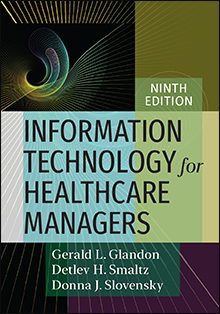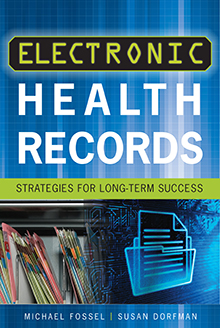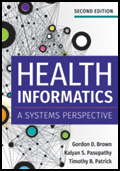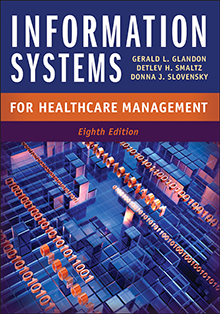
Information Systems for Healthcare Management, Eighth Edition
Gerald L. Glandon, PhD Detlev H. Smaltz, PhD, LFACHE Donna Slovensky, PhD
- Member Price: $84.00
- Non Member Price: $120.00
Book Description
This bestseller provides readers with the comprehensive knowledge necessary to understand healthcare information technology (HIT) and to hone their skills in HIT management. The book explores the areas where leaders must exhibit basic awareness or competency, including hardware, software, and communication systems; operational, management, and clinical applications; and selection, implementation, and valuation. Each chapter has been updated to reflect current trends and challenges in the field as well as the implications of the 2010 healthcare reform law and other relevant federal mandates. Each chapter also features learning objectives, web resources, and discussion questions.
This revised edition includes a glossary that clarifies technical terms as well as a list of abbreviations for important terms. Links to Internet sources are provided to supplement the information on the major topics covered in each chapter.
The eighth edition covers the following topics:
- The five broad forces that will drive future change and potentially have profound impacts on HIT in and across organizations
- The role that government policy and healthcare reform play in influencing HIT
- HIT governance and strategic planning in healthcare organizations, including pertinent background, how to organize an HIT strategic planning effort, the importance of system integration, the basics of systems theory, and management control and decision support systems
- An overview of the various elements of an information system—the devices, programs, and communication networks—and possible configurations that will support clinical service delivery and the associated business processes
- An exploration of the ten key operational and tactical processes that are critical to maximizing HIT efficiencies and effectiveness, including incident management, change management, configuration management, service-level management, capacity management, and services-continuity management
- Specific focus on EHR applications and financial applications to reflect the importance of technology in the areas of patient care and financial management
- The major techniques used to evaluate an HIT investment
Instructor Resources: Test bank, answers and discussion points for the end-of-chapter questions and PowerPoint slides.





